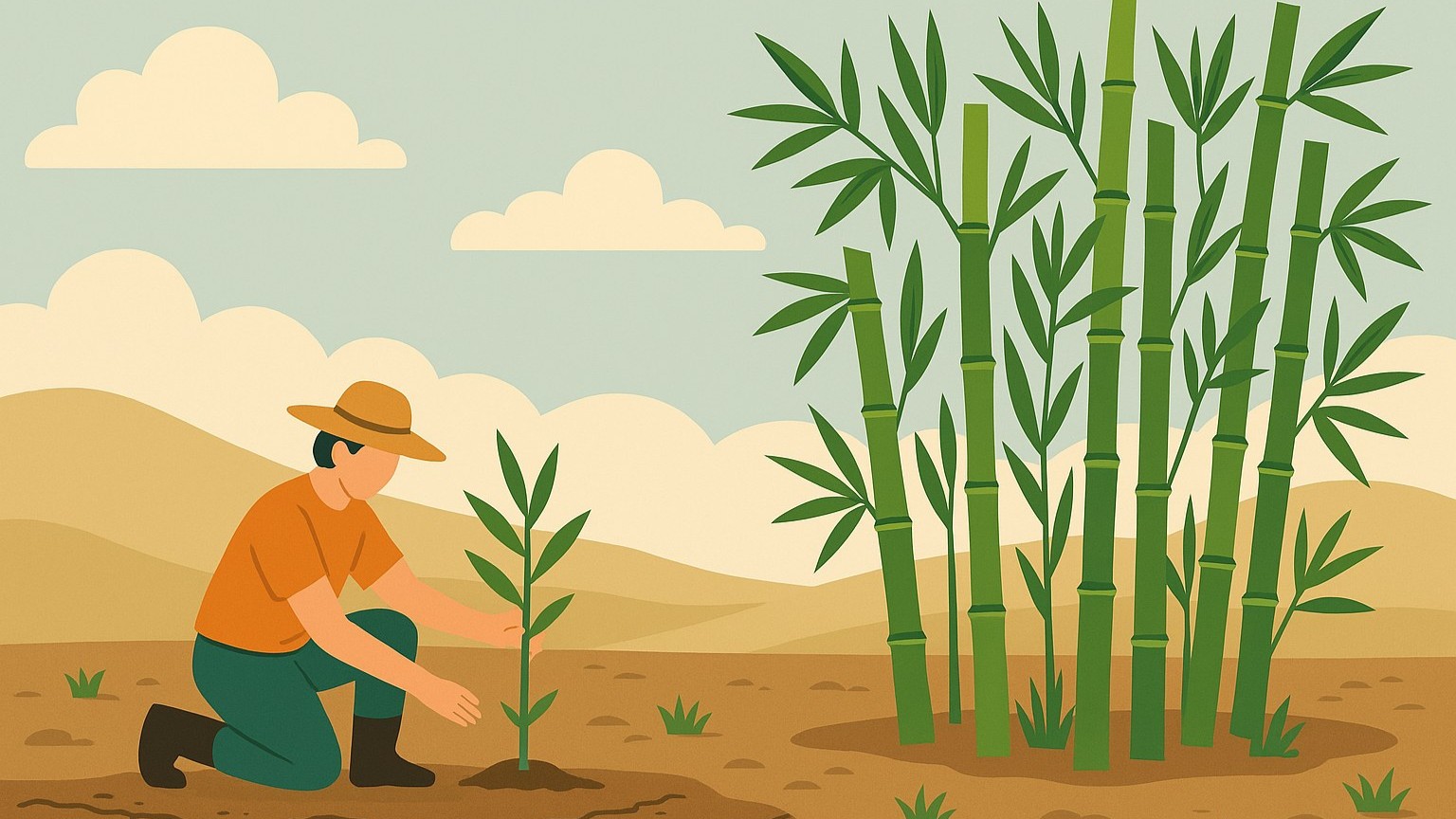Greening the Wastelands Bamboos Role in Land Restoration

Bamboo, often called the “green gold,” is emerging as a powerful tool in restoring barren and degraded land. Its ability to thrive in poor soil conditions and grow rapidly without the need for chemical fertilizers makes it ideal for revitalizing damaged ecosystems. When planted on barren land, bamboo initiates a natural process of healing, stabilizing the soil, and preventing further erosion.
One of bamboo’s greatest strengths is its extensive root system, which binds the soil together and reduces the risk of landslides and surface runoff. Over time, this contributes to improved soil fertility as fallen leaves and organic matter from the bamboo enrich the ground. Unlike many tree species, bamboo regenerates after harvesting, making it a sustainable option for long-term land use.
Beyond its environmental benefits, bamboo also offers economic opportunities for local communities. It can be harvested for use in construction, handicrafts, furniture, and even bioenergy, creating jobs while restoring the land. As barren land transforms into lush bamboo groves, it can also help combat climate change by sequestering carbon dioxide at a high rate.
Furthermore, the presence of bamboo improves microclimates by increasing humidity, attracting biodiversity, and creating conditions suitable for the growth of other native species. It acts as a pioneer plant that paves the way for reforestation and agroforestry projects in once-unproductive areas.
In essence, bamboo is not just a plant — it's a restoration solution. Its fast growth, soil-rebuilding properties, and economic value make it a win-win choice for turning barren landscapes into thriving green zones. As more regions face the impact of land degradation, bamboo offers a sustainable, nature-based path to recovery and resilience.
